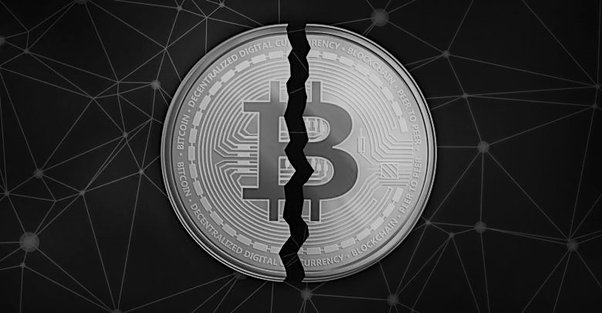Bitcoin halvings occur approximately every four years, or exactly every 210,000 blocks. Since the previous halving took place in May 2020, the next one is projected to take place in April, 2024. Although the precise timing can vary due to the nature of block time adjustments in the Bitcoin protocol.
In this article, we would be taking a leap into discovering what exactly Bitcoin halving is, its root, possible advantages and disadvantages as well.
What is Bitcoin halving?
This event refers to the process where reward that miners receive for validating transactions are split in half. In order to understand how halvings work, one must first understand how Bitcoin mining works.
Bitcoin mining is essential to the security and decentralization of the Bitcoin network, as it ensures that no single entity can control the creation and validation of new blocks.
This process entails a specialized hardware known as “Application-Specific Integrated Circuits” due to the high computational requirements. It’s regarded as a competitive process, where miners with more computational power have a higher chance of successfully adding a block to the blockchain and earning its associated rewards.
Miners compete to solve a complex mathematical problem associated with the present block of transactions and generate valid 64-character hash value that fits a set of parameters. The first miner to successfully complete this is rewarded with a set number of newly minted Bitcoin and also any transaction fees paid by users for transactions included in the block.
In the beginning when Bitcoin was launched in 2019, the block reward was set at 50 bitcoins per block. This initial reward continued until the first Bitcoin halving event in 2012. After this event, the block reward was reduced to 25 bitcoins. The Bitcoin halving event has been programmed to occur approximately after every 210,000 blocks mined, slowly reducing the rate at which new bitcoins are presented into circulation.
This protocol was initiated as a clever way to introduce new bitcoins to the system and incentivize mining in the bitcoin’s early days while also restricting supply and mirroring the scarcity of precious metal.
Bitcoin halving history and why it matters
After the first halving event on November 28, 2012, which reduced the block reward from 50 BTC to 25 BTC, Subsequent halvings that took place on July, 2016 and May, 2020, further cut the block rewards to 12.5 and 6.25 BTC, respectively.
The implication of this event lies in its impact on Bitcoin’s inflation rate. As a result of halving, the rate of new Bitcoin creation reduces, causing the asset to be scarce. This scarcity is usually linked with increased demand, subsequently driving the prices higher.
It is however important to note that the price effects are not certainly instant. Halvings decrease miner rewards, consequently the network hash rate often drops initially as fewer competitive miners drop out. Nevertheless, only the most sophisticated miners continue over time, eventually strengthening the network.
The historical data provided advises that former halvings have coincided with bull markets, however, it is imperative to note that past performances doesn’t ensure future outcomes.
So long as the rules provided by Nakamoto are observed, only 21 million BTC can ever exist. Halvings will continue approximately every four years up until when the last Bitcoin is mined around year 2,140.
Stock-to-flow model (S2F): How halvings affects BTC price
Stock-to-flow model is a widespread quantitative model that measures the relationship between the current supply of a commodity (stock) and the flow of new production. This model has been applied to Bitcoin to examine its scarcity and possible impact on price.
This model measures Bitcoin’s existing supply (stock) against its annual new issuance (flow) to calculate its scarcity. In the context of Bitcoin, the stock-to-flow model proposes that the halving events, which decrease the rate of new Bitcoin production, generate a higher stock-to-flow ratio. The idea is that as the scarcity of Bitcoin goes higher, demand remains relatively constant or rises, leading to higher prices.
Following past reports, the S2F model has revealed connections with Bitcoin’s price movements, particularly around halving events. Advocates claim that these events contribute to the asset’s digital scarcity, comparable to precious metals like gold. Nevertheless, critics warn against relying exclusively on this model, highlighting the multifaceted nature of factors influencing cryptocurrency markets.
Investors are advised to confront this model with a level of skepticism and to utilize it alongside other fundamental and technical analyses while evaluating Bitcoin’s possible price movements.
Potential advantages of halvings
Advocates are of the opinion that Bitcoin halvings come with several possible advantages which includes:
Scarcity and Reduced Inflation: The major purpose of halvings is to regulate the rate at which new Bitcoins are generated, thus guaranteeing scarcity. This scarcity created by halvings can contribute to bullish market sentiments, potentially resulting to long-term price appreciation. The reduction in the inflation rate can be seen as an advantage, as it aligns with the values of sound money and mirrors rare commodities like gold.
Market Perception and Speculation: Halving is an event that usually apprehends the attention of the market and media, thereby creating a narrative of increasing scarcity. This narrative can entice new investors and risk-takers who believe in the probability of higher prices as an outcome of reduced supply.
Mining Economics: Although halvings decrease the rewards for miners, they can also contribute to an improved mining ecosystem by guaranteeing that only the greatest competent miners remain profitable. This can in turn boost the overall security and decentralization of the Bitcoin network.
Potential disadvantages of halvings
Halvings, although has possible advantages, also has disadvantages and possible drawbacks and they include:
Mining Profitability Challenges: Halvings is known to directly influence rewards miners obtain for validating transactions. Some miners, especially those with higher operational costs, may find it difficult to sustain profitability after a halving. This could result to a decrease in mining activity, potentially impacting network security.
Increased Volatility: The beginning and outcome of halving can contribute to short-term price volatility which may limit mainstream acceptance. Traders and speculators may respond to the event with market instabilities, creating uncertainty for short-term investors.
Temporary Miner Attrition: As soon as the halving event is over, profitability declines as slower miners shut down operations. This can reduce hash rate until a balance is attained.
Centralization Risks: Due to the reduction in the number of small miners, mining power may centralize in a few large pools and industrial miners, threatening decentralization principles.
Security Uncertainty: A major hashrate drop could hypothetically expose the network to 51% attacks until the remaining miners pick up the slack.
Next Bitcoin Halving in 2024
As we mentioned earlier, the next Bitcoin halving is expected to happen in April 2024 when the block hits 740,000. Bitcoin miners are getting ready for this year’s 50% reduction in block reward by updating their mining hardware and software as experts has predicted significant profits.
The Bitcoin halving of this year will cut the present block reward from 6.25 to 3.125 BTC, in a bid to reduce the annual inflation and boost the instrument’s competitiveness. Bitcoin miners are getting ready for the April 2024 halving event by preparing both financially and technically. Bitcoin halving has significant implications for its network and miners which includes subsequent price increases, however, the price of Bitcoin is influenced by several factors and isn’t solely determined by halving events.
Although the advantages and disadvantages of the halving event is still a topic of debate among experts, it will continue to play a major role in bitcoin’s economics until the maximum 21 million supply cap is gotten.









